
|
You entered: all sky
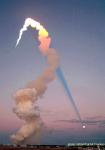 Shuttle Plume Shadow Points to Moon
Shuttle Plume Shadow Points to Moon
19.02.2001
Why would the shadow of a space shuttle launch plume point toward the Moon? Two weeks ago during the launch of Atlantis, the Sun, Earth, Moon, and rocket were all properly aligned for this photogenic coincidence.
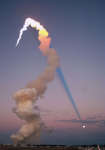 Shuttle Plume Shadow Points to the Moon
Shuttle Plume Shadow Points to the Moon
27.11.2011
Why would the shadow of a space shuttle launch plume point toward the Moon? In early 2001 during a launch of Atlantis, the Sun, Earth, Moon, and rocket were all properly aligned for this photogenic coincidence.
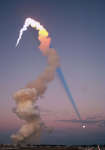 Rocket Plume Shadow Points to the Moon
Rocket Plume Shadow Points to the Moon
24.06.2018
Why would the shadow of a space shuttle launch plume point toward the Moon? In early 2001 during a launch of Atlantis, the Sun, Earth, Moon, and rocket were all properly aligned for this photogenic coincidence.
 APOD: 2024 December 4 Б Driveway Analemma
APOD: 2024 December 4 Б Driveway Analemma
4.12.2024
Does the Sun return to the same spot on the sky every day?б No.б A more visual answer is an analemma, a composite of sky images taken at the same time and from the same place over a year.
 APOD: 2024 February 11 Б Rocket Plume Shadow Points to the Moon
APOD: 2024 February 11 Б Rocket Plume Shadow Points to the Moon
11.02.2024
Why would the shadow of a rocket's launch plume point toward the Moon? In early 2001 during a launch of the space shuttle Atlantis, the Sun, Earth, Moon, and rocket were all properly aligned for this photogenic coincidence.
 APOD: 2023 April 26 Б The Moon through the Arc de Triomphe
APOD: 2023 April 26 Б The Moon through the Arc de Triomphe
26.04.2023
Was this a lucky shot? Although many amazing photographs are taken by someone who just happenedбto be in the right place at the right time, this image took skill and careful planning. First...
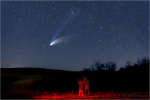 Hale Bopp: The Great Comet of 1997
Hale Bopp: The Great Comet of 1997
13.10.2013
Sixteen years ago, Comet Hale-Bopp rounded the Sun and offered a dazzling spectacle in planet Earth's night. This stunning view, recorded shortly after the comet's 1997 perihelion passage, features the memorable tails of Hale-Bopp -- a whitish dust tail and blue ion tail.
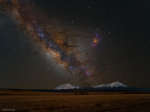 Milky Way Over the Spanish Peaks
Milky Way Over the Spanish Peaks
24.05.2016
That's not lightning, and it did not strike between those mountains. The diagonal band is actually the central band of our Milky Way Galaxy, while the twin peaks are actually called the Spanish Peaks -- but located in Colorado, USA.
 A Perseid Meteor
A Perseid Meteor
11.08.2004
The ongoing Perseid Meteor Shower should be at its strongest tonight and tomorrow night. Although meteors should be visible all night long, the best time to watch will be between 2:00 AM and dawn each night. In dark, moonless, predawn skies you may see dozens of meteors per hour.
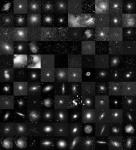 Messier Marathon
Messier Marathon
11.03.2000
Gripped by an astronomical spring fever, it's once again time for many amateur stargazers to embark on a Messier Marathon! The Vernal Equinox occurs March 20, marking the first day of Spring for the Northern Hemisphere.
|
January February March April May June July |
|||||||||||||||||||||||||||||||||||||||||||||||||